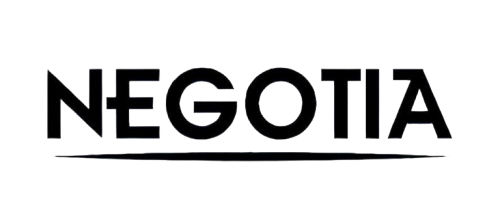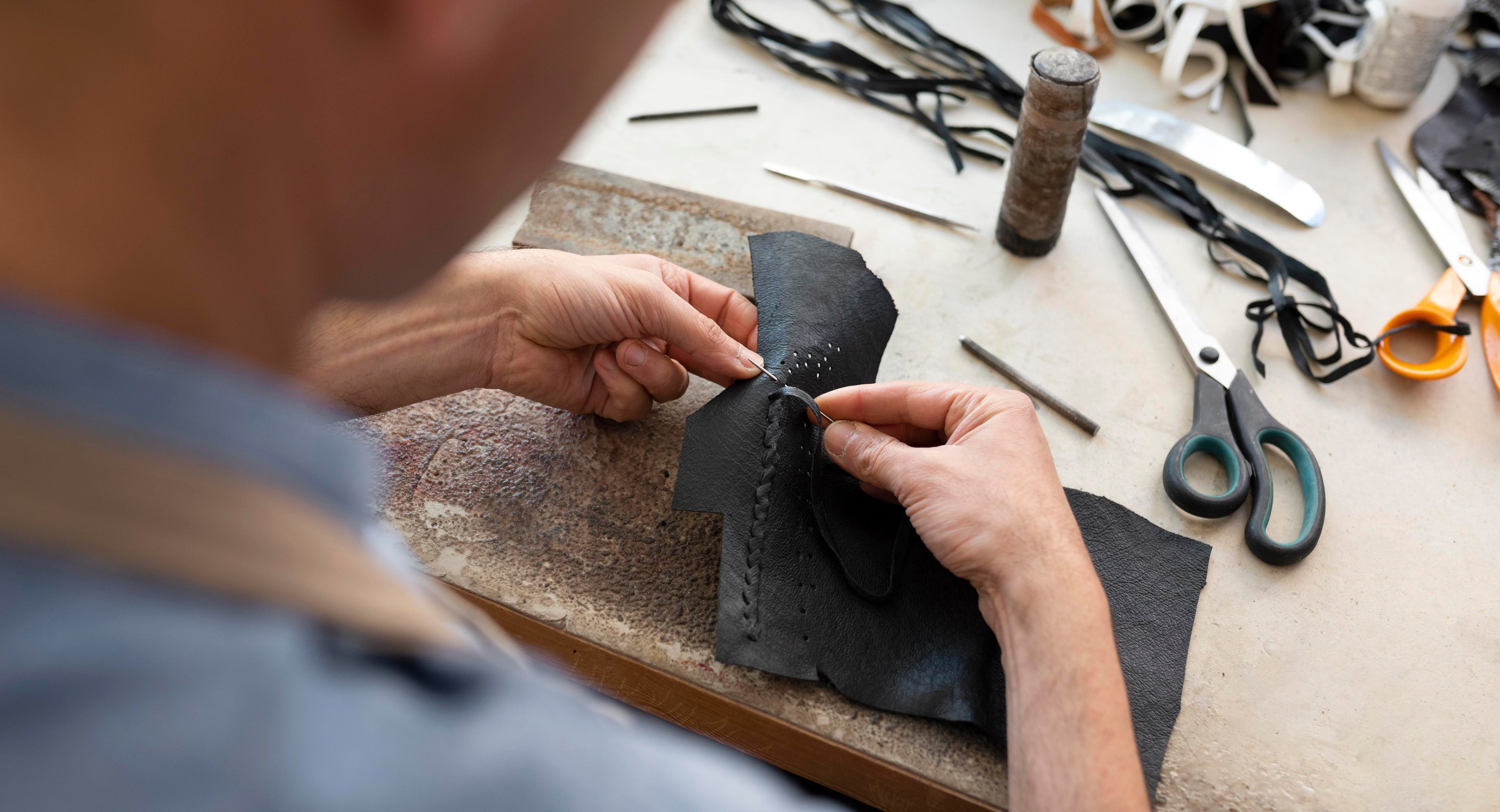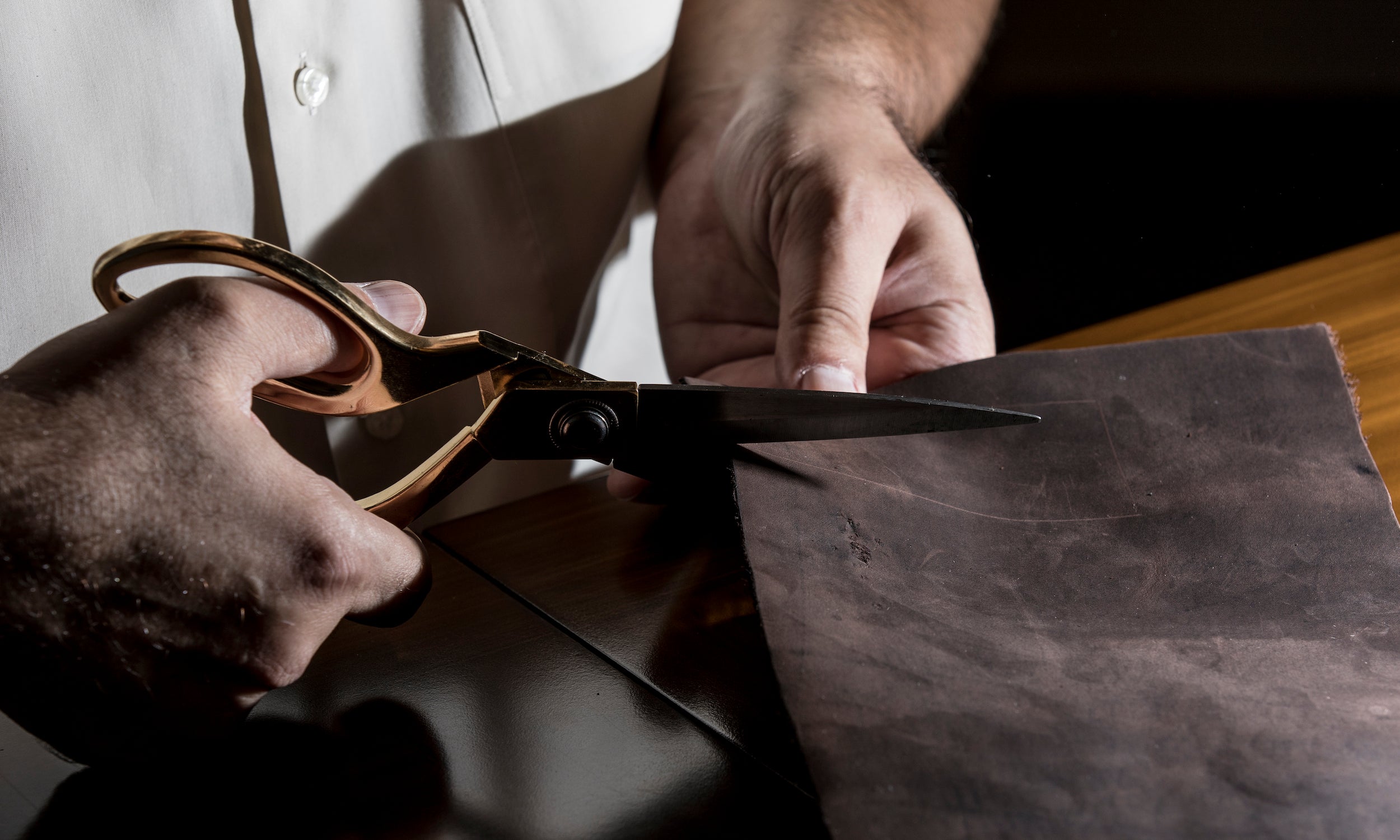
Vegetable tanned leather vs. chrome tanned leather
Leather products are very popular due to their durability and appearance. However, not all leather products are produced in the same way. There are two main methods of tanning leather: vegetable and chromium. In this blog, we will discuss the differences between these two methods, as well as the advantages and disadvantages of each.
Vegetable tanned leather
Vegetable tanned leather is the oldest method of tanning. The use of plants, such as bark, leaves, roots and fruits, is used to tanne the leather. It is a slow and labor-intensive process that can take more than a month. During the tanning process, no chemicals are used, and the leather is treated with natural products such as resins and oils.
Benefits of vegetable tanned leather:
-
Environmentally friendly: Vegetable tanning is a sustainable process and causes less pollution than chromium tanning. The process uses natural substances such as plant tannins.
-
Durability: Vegetable tanned leather lasts longer than chrome tanned leather. It softens over time and develops a beautiful patina.
-
Health: Vegetable tanned leather is healthier for the people who work with it. During chromium tanning, toxic fumes can be released, while vegetable tanning is safer for humans and animals.
-
Unique appearance: Vegetable tanned leather has a unique appearance and a warm, natural look. It has a beautiful color and can develop a beautiful patina over time.
-
Biodegradable: Vegetable tanned leather is biodegradable and therefore more environmentally friendly than chrome tanned leather. It can be recycled or composted at the end of its life.
- Disadvantages of vegetable tanned leather:
-
More expensive: Vegetable tanned leather is generally more expensive than chrome tanned leather due to the intensive and time-consuming process required to produce the leather.
-
More prone to scratches and stains: Vegetable tanned leather tends to get more scratches and stains than chrome tanned leather, as it is not treated with chemicals that protect against these factors.
-
Limited color options: Because vegetable tanned leather contains no chemicals, it is more difficult to dye it in different colors than chrome tanned leather. As a result, the color options are more limited.
Chrome tanned leather
Chrome tanned leather is the most commonly used method of tanning and is used to produce about 90% of all leather products. The leather is treated with chrome salts, making it a relatively fast and inexpensive way to tanne leather.
Advantages of chrome tanned leather:
-
Water resistance: Chrome tanned leather is naturally resistant to water and moisture, making it a good choice for products used in wet conditions.
-
Durability: Chrome tanned leather is generally more durable than vegetable tanned leather and lasts longer.
-
Smoothness: The tanning process of chrome tanned leather results in a softer and smoother leather, making it easier to work with and use.
-
Colour fastness: Chrome tanned leather retains its colour better than vegetable tanned leather and is less likely to fade in the sun.
-
Environmental pollution: The tanning process of chrome tanned leather is very polluting. Large quantities of chemicals and waste are released that are harmful to the environment. Tanning chrome tanned leather is therefore unsustainable and contributes to the pollution of our planet.
-
Health: The chemicals used in tanning chrome tanned leather are not only harmful to the environment, but also to the health of the people who work with it. During the tanning process, toxic fumes are released that are harmful to the respiratory tract and skin.
-
Quality: Chrome tanned leather is generally less durable and of lower quality than vegetable tanned leather. It is less resistant to wear and tear and can damage faster.
-
Allergic reactions: People with sensitive skin may have an allergic reaction to chrome tanned leather. The chemicals used during the tanning process can cause skin irritations and allergic reactions.
-
Discoloration: Chrome tanned leather can discolor under the influence of sunlight and heat. This can lead to loss of color and a less beautiful appearance of the leather.






